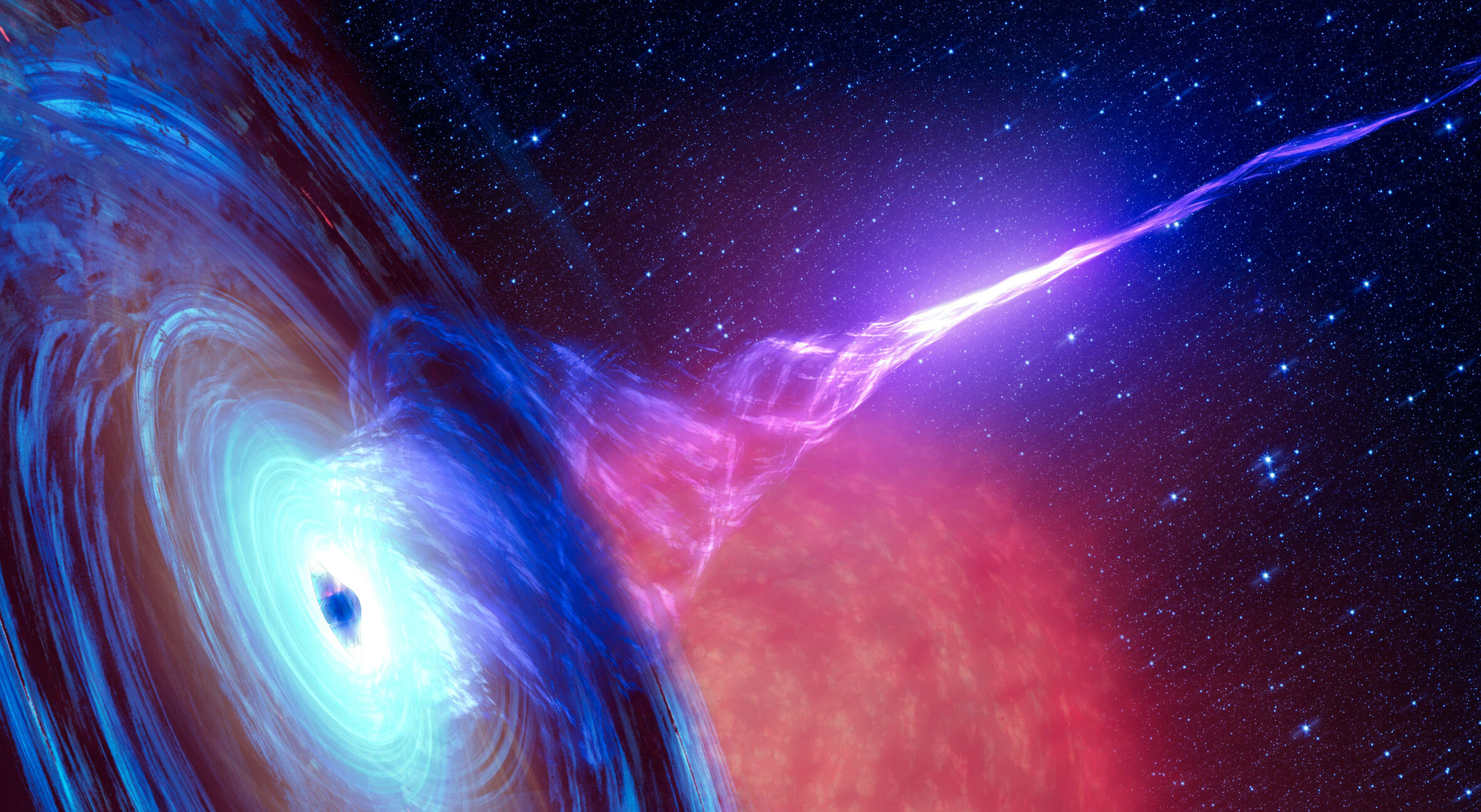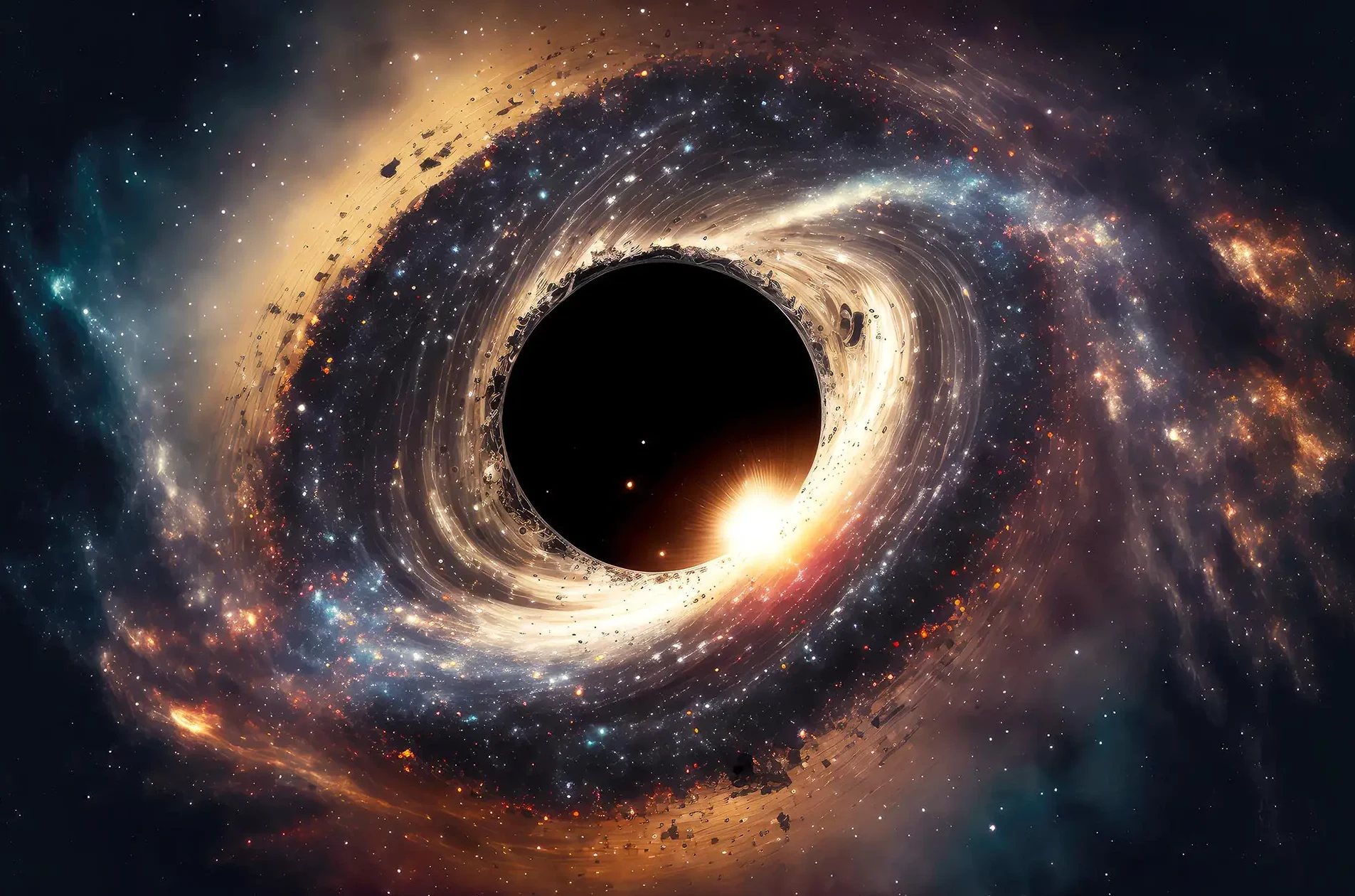Black holes are fascinating and mysterious entities in the universe that have captured the attention of both the public and scientists alike. To comprehend the breakthroughs made in understanding black holes, it is essential to first grasp their definition and characteristics. Black holes are regions in space where an immense amount of mass is packed into a tiny volume, creating a gravitational pull so strong that nothing, not even light, can escape its grasp. This unique property gives black holes their name, as they appear as “holes” in the fabric of space-time. The concept of black holes challenges our understanding of matter, space, and time, pushing the boundaries of our knowledge.
The mysteries surrounding black holes have long intrigued scientists, leading to continuous efforts to unravel their secrets. Physicists have made significant breakthroughs in recent years, shedding light on the enigmatic nature of black holes. In a landmark series of calculations, physicists have proved that black holes can shed information, contradicting previous beliefs that information is lost within them. Additionally, the discovery of a mathematical technique for calculating the physics of black holes by Tom Hartman has provided further insights into their behavior. These advancements have contributed to a better understanding of the fundamental properties and behavior of black holes, bringing us closer to solving the long-standing mysteries surrounding them.
Understanding black holes holds immense importance in the field of physics. Black holes have a profound impact on the surrounding universe, influencing the formation of galaxies. They also play a crucial role in the study of gravity and the quest to combine quantum mechanics and gravity, known as the black hole information paradox. The study of black holes continues to provide valuable insights into the nature of the universe, challenging our current understanding and expanding the frontiers of knowledge. The groundbreaking discoveries made by physicists in understanding black holes have paved the way for further exploration and have opened up new avenues for scientific inquiry.
Theoretical breakthrough in black hole physics
Theoretical breakthroughs in black hole physics have recently been made, advancing our understanding of these mysterious cosmic entities. One significant advancement lies in the field of the theory of general relativity, which was pioneered by physicists such as Roger Penrose, Reinhard Genzel, and Andrea Ghez. Penrose’s ingenious mathematical methods have allowed for the exploration of Albert Einstein’s theory of general relativity, providing insights into the nature of black holes. These advancements in understanding the fundamental principles of general relativity have paved the way for further discoveries in black hole physics.
The concepts of the event horizon and singularity have also been crucial in deepening our understanding of black holes. The event horizon refers to the boundary around a black hole beyond which nothing, not even light, can escape its gravitational pull. This boundary, often described as a spherical surface, marks the point of no return for objects falling into a black hole. At the center of black holes lies the singularity, a point where the known laws of nature break down, and the density becomes infinitely high. The exploration of these concepts has shed light on the extreme physics that occur within black holes.
Another significant breakthrough in black hole physics relates to Hawking radiation and the information paradox. Initially proposed by physicist Stephen Hawking, Hawking radiation suggests that black holes can emit particles and energy, gradually losing mass over time. This concept challenges the traditional understanding that black holes only consume matter and do not emit anything. The information paradox arises from the question of what happens to the information of matter that falls into a black hole. Recent research has shown that there may be intricate entanglements between the quantum state of matter inside a black hole and the state of the matter outside, potentially resolving the information paradox. These breakthroughs in understanding the behavior of black holes have opened up new avenues for further exploration and have deepened our knowledge of these enigmatic cosmic phenomena.
Observational evidence supporting the existence of black holes
The detection of gravitational waves has provided strong observational evidence for the existence of black holes. In 2016, scientists announced the first direct detection of gravitational waves, which were produced during the merger of two black holes.

This breakthrough discovery, made by the Laser Interferometer Gravitational-Wave Observatory (LIGO), confirmed the predictions of Albert Einstein’s general theory of relativity. Subsequent observations of gravitational waves have further supported the existence of black holes, including the detection of very long gravitational waves that could reveal supermassive black holes. These findings have revolutionized our understanding of black holes and their role in the universe.
Another line of observational evidence for black holes comes from the study of X-ray emissions from accretion disks. Accretion disks are formed as gas spirals towards a black hole, heating up to temperatures of millions of degrees. In 2022, the first-ever recordings of X-ray emissions from a black hole’s far side confirmed Einstein’s general relativity theory. Researchers have also used a technique called X-ray reverberation mapping to study the inside of black hole accretion disks, providing valuable insights into their structure and behavior. These observations of X-ray emissions from accretion disks provide compelling evidence for the presence of black holes and their powerful gravitational pull.
Observations of stellar orbits around invisible objects have also provided evidence for the existence of black holes. By studying the movements of visible objects around black holes, scientists can infer the presence of these invisible celestial bodies. For example, the Nobel Prize in Physics was awarded in 2020 to Roger Penrose, Reinhard Genzel, and Andrea Ghez for their studies of black holes, including the discovery of a supermassive black hole at the center of our galaxy. By observing the motions of stars near the galactic center, astronomers have been able to map the gravitational influence of the black hole and confirm its existence. These observations of stellar orbits provide strong evidence for the presence of black holes and their profound impact on the surrounding space.
Recent discoveries in understanding black hole behavior
Recent breakthroughs in understanding black holes have shed light on their behavior, particularly in the context of black hole mergers and the detection of gravitational wave signals. Gravitational waves, predicted by Albert Einstein, are ripples in the fabric of space-time that can be caused by the merging of two black holes. In 2016, scientists successfully detected gravitational waves resulting from the violent collision of two black holes, providing direct evidence of their existence. This groundbreaking discovery confirmed long-held theories and opened up new avenues for studying the properties and dynamics of black holes. The detection of gravitational waves has revolutionized our understanding of black holes and their role in shaping the universe.

Another area of recent breakthroughs in black hole research is the study of supermassive black holes and their relationship to galaxy formation. Scientists have found evidence of a gravitational wave background, supporting standard models of black hole growth. This discovery has provided astrophysicists with a new window into understanding the nature of supermassive black holes, which are extremely dense and mysterious entities. One proposed mechanism for the formation of supermassive black holes involves a chain reaction of star collisions in compact star clusters. The presence of supermassive black holes in galaxies has also been linked to the formation and evolution of galaxies themselves. Observations of supermassive black holes at the centers of galaxies have even pointed to a potential source of dark energy, a significant component of the universe. These recent findings have deepened our understanding of the intricate relationship between supermassive black holes and the larger cosmic structures they inhabit.
Active galactic nuclei and quasars, powered by supermassive black holes, have also been the subject of recent breakthroughs in black hole research. The interaction between a central supermassive black hole and its accretion disk creates an active galactic nucleus, which releases enormous amounts of energy. Scientists have been able to measure the distance to quasars, incredibly bright galactic cores fueled by supermassive black holes, providing valuable insights into their properties. These active galactic nuclei and quasars are some of the brightest objects in the universe and offer a unique opportunity to study the extreme conditions near black holes. By studying these phenomena, researchers can gain a deeper understanding of the processes occurring in the vicinity of supermassive black holes and their impact on the surrounding environment. These recent breakthroughs in understanding black holes have paved the way for further exploration and discovery in the field of astrophysics.
Implications and future directions in black hole research
The study of black holes has far-reaching implications for fundamental physics. Black holes serve as natural laboratories that allow scientists to test and refine our understanding of gravity, quantum mechanics, and the nature of space and time. Recent breakthroughs in black hole research have bolstered the idea that black holes are reversible, challenging previous assumptions about their irreversible nature. These findings have significant implications for our understanding of physical theory and the fundamental laws of the universe. By studying black holes, physicists can continue to push the boundaries of our knowledge and uncover new insights into the nature of the cosmos.

Another exciting direction in black hole research is the exploration of the connection between black holes and dark matter. Dark matter, which makes up a significant portion of the universe’s mass, remains one of the biggest mysteries in astrophysics. Recent studies have suggested that primordial black holes could be a candidate for dark matter. Astrophysicists have proposed that black holes, particularly primordial black holes, could account for all dark matter in the universe. Understanding the relationship between black holes and dark matter could have profound implications for our understanding of the universe’s structure and evolution.
Advancements in technology and instruments have also played a crucial role in advancing black hole studies. The development of gravitational wave detectors, such as the Laser Interferometer Gravitational-Wave Observatory (LIGO), has allowed scientists to directly observe and study black holes. These detectors have been instrumental in detecting gravitational waves emitted during black hole mergers, providing valuable data for understanding the physics of black holes. Additionally, the use of advanced telescopes and imaging techniques, such as the Event Horizon Telescope (EHT), has allowed scientists to capture the first-ever image of a black hole. These technological advancements have opened up new avenues for studying black holes and have revolutionized our understanding of these enigmatic cosmic objects.
